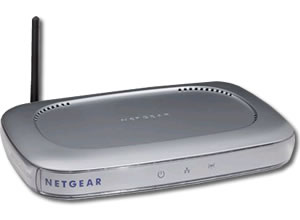Networking products for your business


The old-fashioned way
Good old-fashioned Ethernet remains the most widely used option, both at work and at home. And if you simply need to hook up a few stationary systems in the same room, or you have easy access to overhead or sub-floor conduits, it’s still the way to go. Ethernet offers the fastest speeds, the lowest cost and the highest reliability. Almost every new PC has an Ethernet port built in, and you can find PCI cards or USB adapters for older machines for £15 or less. Ethernet hubs and switches are equally affordable and can be daisy-chained when you run out of ports. Just make sure all your hubs, switches and network cards support Fast Ethernet (or 100Mbps) -- older equipment may support only the 10Mbps standard. If you want to move huge files quickly, then you may want to consider Gigabit Ethernet (1000Mbps). It's more expensive than Fast Ethernet, but prices are dropping fast and Gigabit Ethernet will help future-proof your network.
And the wireless way
Increasingly, however, wireless is becoming a simpler and cheaper option for many businesses. That’s especially true if you need to create a network that spans a larger area or is located in an older building where running Ethernet cables through the walls is costly and arduous. The only real choice for wireless LAN is Wi-Fi, and although it’s easy to get confused by all of the various flavours out there, the recent approval of 802.11g makes things a lot simpler. We recommend 802.11g for small businesses because it combines the best of both worlds: the 54Mbps speed of 802.11a and the range of (and compatibility with) the more prevalent 2.4GHz 802.11b. And 802.11g is only marginally more expensive than 802.11b.
If deciding which type of wireless to pick has become easier, working out what hardware to buy has not. Theoretically, it’s possible to build a basic network with an access point or a hub and a few adapters on the cheap, but this approach has many limitations and poses a security risk since it exposes all of your PCs directly to the Internet. Instead, we recommend that all small businesses start with a router/gateway that includes an 802.11g access point and firewall. These cost about £100. Usually up to four PCs or Macs located close to the router/gateway can be connected directly to the built-in switch or hub using Ethernet cables, but additional systems can be added to the wireless network via a wireless adapter. These come in PCI, USB, PC Card, and even CompactFlash and SD formats, and most cost less than £75. Be sure to buy networking gear that supports the latest security standards, such as WPA (Wireless Protected Access).
Other alternatives
Although they are less popular, a few networking alternatives may be suitable for some small businesses. These include phone-line (HPNA 2.0) and power-line (HomePlug) networking -- both of which piggyback on existing wires in a home or an office. Generally, the same types of routers, gateways and adapters are available for these solutions, but they are a little harder to find and cost a bit more. Ultimately, rather than replacing wireless, these networking technologies will probably be best suited for extending wireless networks to offices or rooms that wireless can't reach. Several products are already on the market that combine phone-line or power-line networking with wireless.